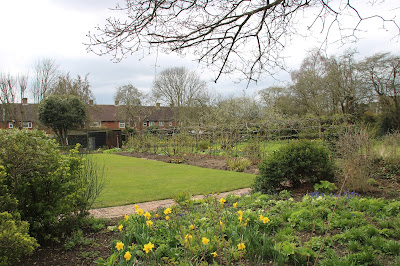The Red House near Orpington is where William Morris Lived for 5 years
This is why Jennifer wanted to go
To me it was the house Philip Webb Built and Designed.
It took the design of mansions from the square blocks to the home we have today.
This is why Jennifer wanted to go
To me it was the house Philip Webb Built and Designed.
It took the design of mansions from the square blocks to the home we have today.
We arrived to a boring entrance but once in from around the Brick Wall
As for outside, the well was the central feature
















